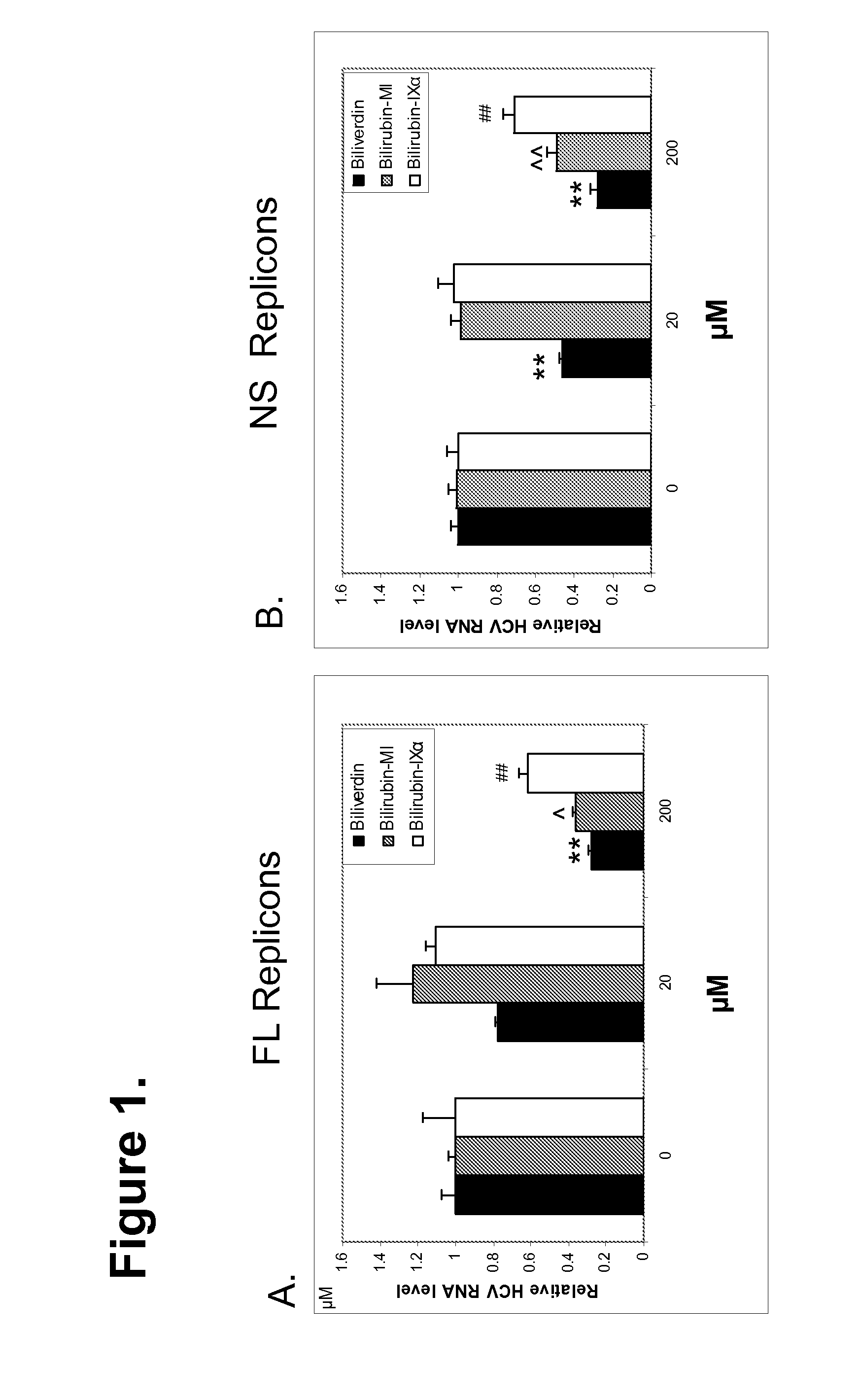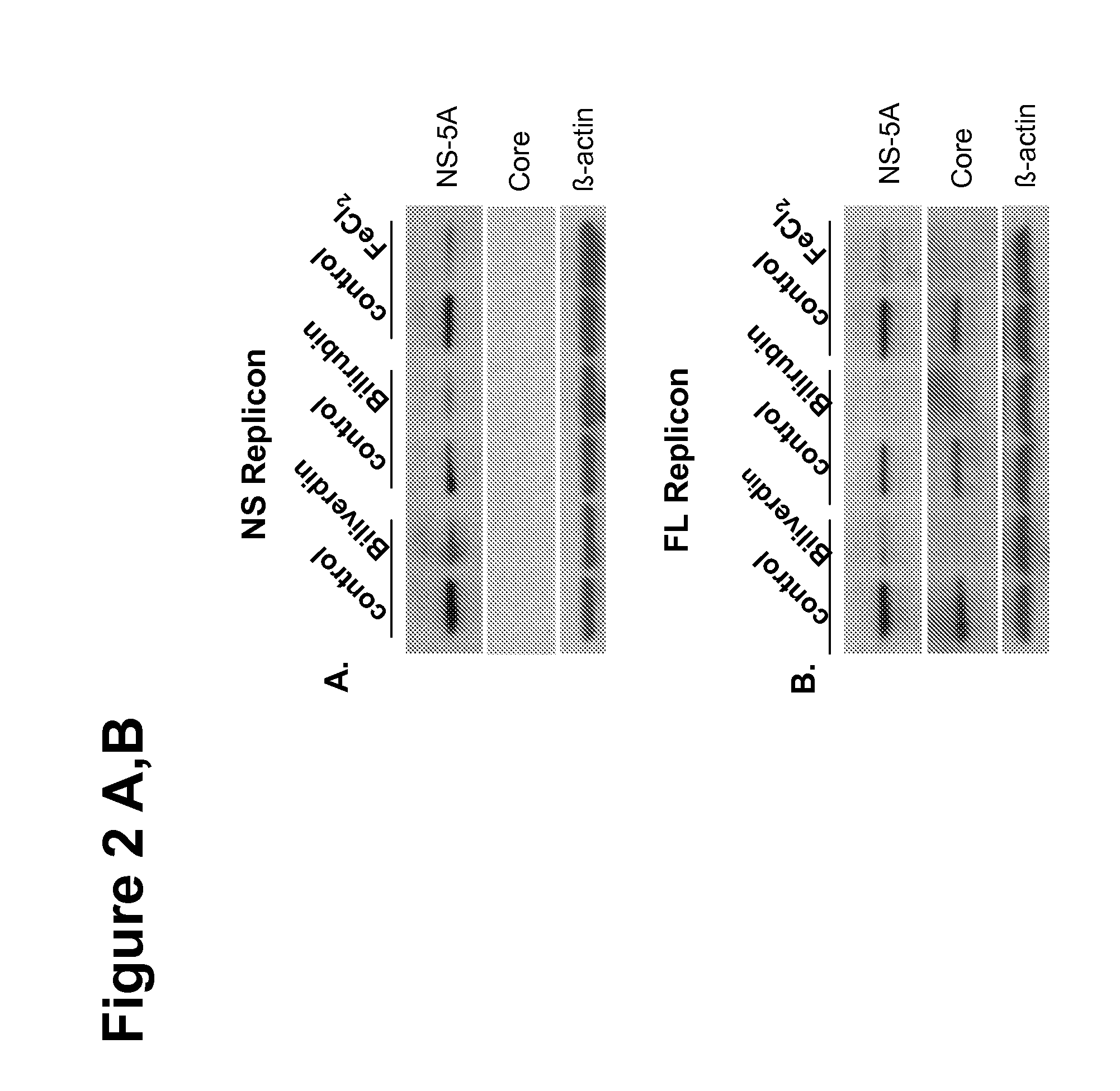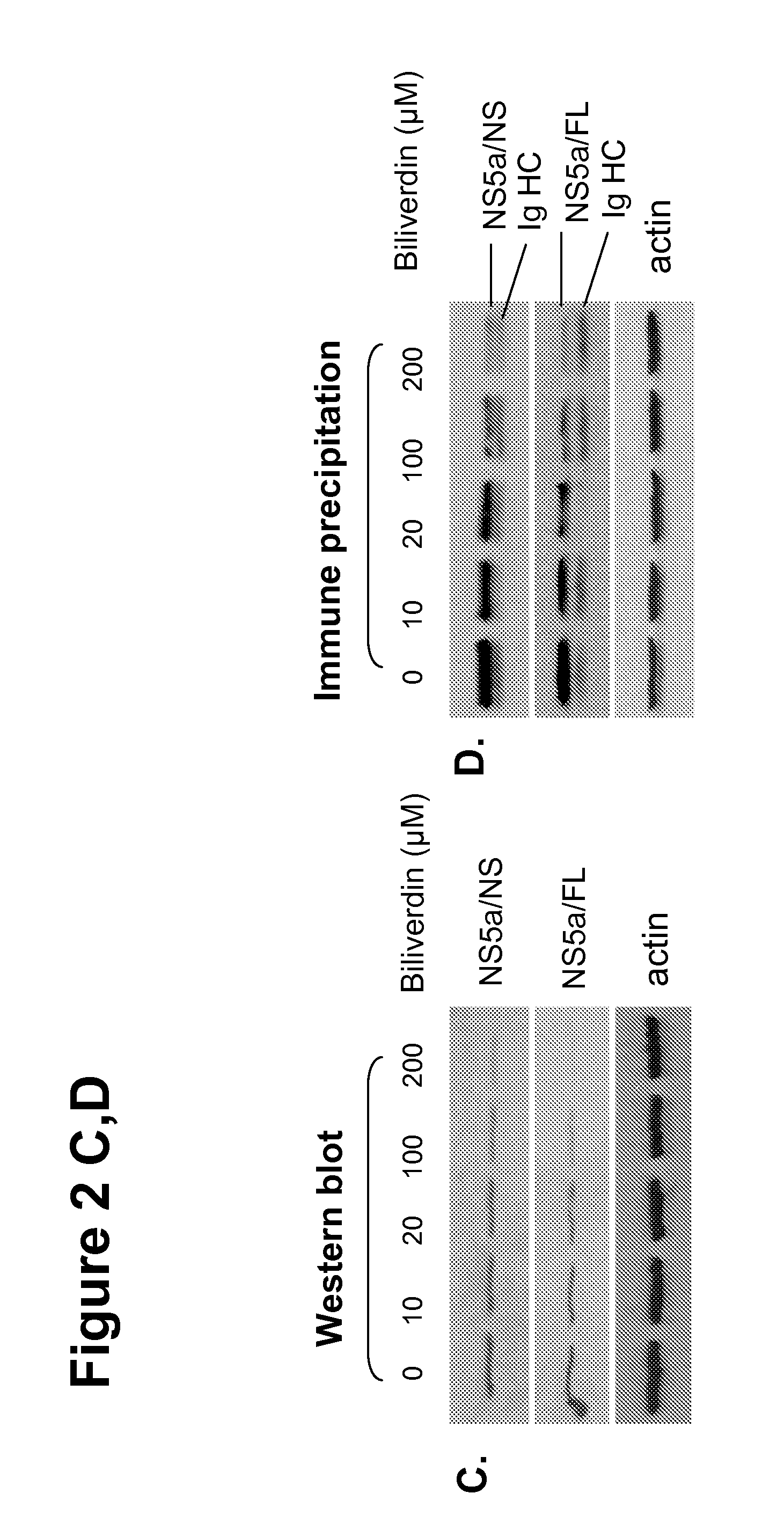Treatment of hepatitis c virus infections
a technology of hepatitis c virus and infection, applied in the field of infectious diseases, virology and medicine, can solve the problems of insufficient hcv vaccine availability, numerous side effects of combination therapy, and only effective in about 50% of treated individuals,
- Summary
- Abstract
- Description
- Claims
- Application Information
AI Technical Summary
Benefits of technology
Problems solved by technology
Method used
Image
Examples
example 1
Materials & Methods
[0128]Materials. Taq DNA polymerase (Perkin-Elmer Cetus, Norwalk, Conn.), and Moloney murine leukemia virus reverse transcriptase (Gibco / BRL Life Technologies, Gaithersburg, Md.) were used in these studies. Bile pigments were purchased from Frontier Scientific, Inc (Logan, Utah) and included bilirubin-IX-α (#B584-9), biliverdin-IX-α hydrochloride (#B655-9) and mesobilirubin (B588-9). Bilirubin mixed isomers, (>99%) was purchased from Sigma Chemical Co (Saint Louis, Mo.). All preparations of tetrapyrroles were the purest form available (99% purity). The BR mixed isomer preparation contained 93% bilirubin IX-α, 3% bilirubin III-α, 3% bilirubin XIII-α and traces of β and γ isomers (MSDS information). BV was prepared by oxidation of highly purified α-bilirubin followed by final chromatographic purification (personal communication, Dr. Colin Ferguson, Echo Laboratories, Frontier Scientific, Salt Lake City, Utah). All tetrapyrroles were dissolved in 0.2 N NaOH and added...
example 2
Results
[0140]The inventors previously showed that induction of HO-1 with hemin results in decreased HCV replication in vitro (Zhu et al., 2008); however, it was not known whether physiological concentrations of heme exert antiviral effects. Incubation of replicons with various amounts of hemin demonstrated a concentration-dependent antiviral effect of hemin, apparent at levels as low as 5 (Table 1). These concentrations are well within the physiological range of heme in human circulation (10-16 μM) and, in the presence of HO-1, would be expected to yield equimolar quantities of BV, Fe and carbon monoxide.
TABLE 1Heme inhibition of HCV replicationHeme Relative Replicon[uM][HCV] [ΔCT]*SEMHuh5-15NS01.00.0850.270.02100.090.003200.030.003Huh7.5FL01.00.1650.220.03100.080.02200.040.006Log phase replicon cells were incubated with hemin or control vehicle overnight and the relative amount of HCV RNA then determined by the comparative cycle threshold level (ΔCT) as described in Methods. Each v...
example 3
Discussion
[0149]Heme oxygenase catalyzes the breakdown of heme to equimolar quantities of BV, iron and carbon monoxide. Expression of the inducible isoenzyme HO-1, also known as heat shock protein 32, is readily upregulated in response to stressors such as hypoxia, heat shock, heavy metals, and oxidants (Ryter et al., 2006). Along with other investigators, the inventors have shown that HO-1 expression is downregulated in HCV-infected human liver and highly modulated in some in vitro models of HCV (Abdalla et al., 2004; Zhu et al., 2008; Abdalla et al., 2005; Wen et al., 2008; Ghaziani et al., 2006; Shan et al., 2007). Furthermore, in cell culture models of HCV, HO-1 modulates both oxidative stress and HCV replication (Zhu et al., 2008; Shan et al., 2007).
[0150]In order to identify the mechanisms by which exogenous heme or HO-1 overexpression inhibits HCV replication in replicons (Zhu et al., 2008; Shan et al., 2007; Fillebeen et al., 2007), the inventors studied the antiviral activi...
PUM
| Property | Measurement | Unit |
|---|---|---|
| time | aaaaa | aaaaa |
| resistance | aaaaa | aaaaa |
| structure | aaaaa | aaaaa |
Abstract
Description
Claims
Application Information
 Login to View More
Login to View More - R&D
- Intellectual Property
- Life Sciences
- Materials
- Tech Scout
- Unparalleled Data Quality
- Higher Quality Content
- 60% Fewer Hallucinations
Browse by: Latest US Patents, China's latest patents, Technical Efficacy Thesaurus, Application Domain, Technology Topic, Popular Technical Reports.
© 2025 PatSnap. All rights reserved.Legal|Privacy policy|Modern Slavery Act Transparency Statement|Sitemap|About US| Contact US: help@patsnap.com



